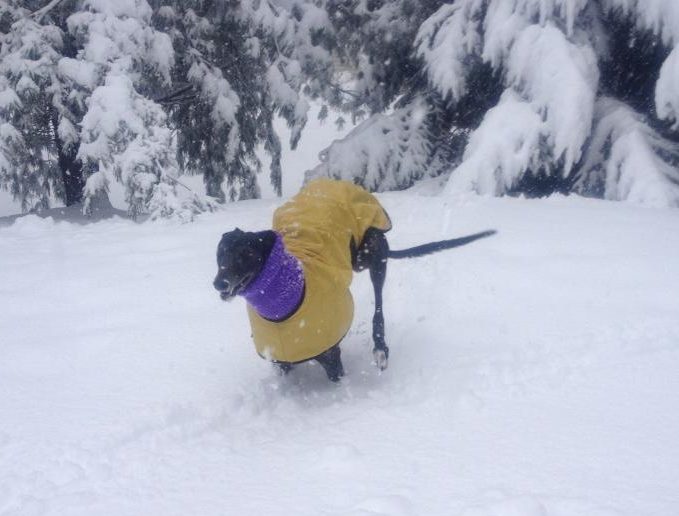Main Content

The temperature is dropping and there may be snow in the forecast. Everyone knows this is the time of year to bundle up, stay inside when the weather is bad, and do what we can to keep warm. But what about our dogs? Is your pet ready or even able to adapt to the cold winter weather? Some breeds hold up better than others, but all dog owners must monitor their pets closely to ensure they are not at risk.
To help dog owners understand safe vs. unsafe temperatures, Tufts University created a weather safety scale (see the top of the second page). The scale provides guidelines for winter weather safety for different sizes of dogs. It also takes into account whether a breed is specifically suited for cold weather (northern or heavy-coated breed), if there is moisture present (i.e. rain, sleet, or snow), and if good shelter and bedding is available. Before sending Fido outside, be sure to check the chart to see if the weather may be too risky for anything longer than a potty break.

The American Kennel Club also provides 10 Winter Safety Tips for Dog Owners. Several tips focus on caring for your dog’s paws. Keeping your dog’s paws protected will ensure they are able to enjoy their time outdoors. Booties will keep paws protected from cuts and injuries when playing in the snow. After every walk, owners should wipe down their pet’s paws to remove road salt and other harsh chemicals. Don’t forget to trim the fur between your dog’s pads so they don’t collect ice and snow. Another big tip on the list is to bundle your dog up when outside. Short-hair breeds especially need extra layers to stay warm. Be sure to limit your time outside and watch your dog closely for signals that they are cold and ready to head inside.
Another winter danger to watch out for is antifreeze. This harsh chemical is often used to de-ice windshields in the winter. Unfortunately, it smells and tastes sweet to dogs and every year many animals end up in serious danger. If ingested and left untreated, antifreeze will lead to kidney failure and most likely death. If you suspect your dog has ingested antifreeze, seek immediate veterinary assistance. Dogs must be treated within 8-12 hours of ingestion. Symptoms to watch for include appearing drunk, excessive drooling, vomiting, seizures, excessive thirst, and urination. Don’t be fooled if these symptoms seem to clear up after 12 hours. Damage is still being done to your dog’s body and they must get veterinary help right away. To learn more about antifreeze poisoning, visit the Pet Poison Helpline.
Winter can be a wonderful time with your dog. Just as you would bundle yourself up before heading outside, make sure you do the same for your dog. Check the weather forecast, dress your pet warmly, protect their paws, and monitor their time outside. Some dogs enjoy the outdoors so much they forget to let you know when they are cold. No one knows your dog better than you, so keep a close eye on them. Are they holding their paws off the ground, refusing to move, or whimpering? These could all be signs that your dog is too cold and needs to go inside. Don’t forget to offer plenty of water to your dog once you are back inside. It is very important to stay hydrated during the winter months.
By Kelly Dziak, 4-H Program Associate, Rutgers Cooperative Extension